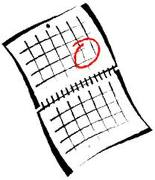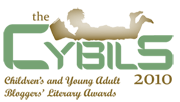“Taking the Mystery out of Leveled Books”: Mark Your Calendar
by Stacey
 My school district uses leveled books which is a method that I stand firmly behind philosophically. Thank goodness. I have fielded question upon question from parents who are frustrated by the system and feel like their children are lagging behind in reading.
My school district uses leveled books which is a method that I stand firmly behind philosophically. Thank goodness. I have fielded question upon question from parents who are frustrated by the system and feel like their children are lagging behind in reading.
Leveled reading takes place within a guided reading curriculum. According to Irene C. Fountas and Gay Su Pinnell, authors of Guided Reading: Good First Teaching for All Children, “Guided reading is a context in which a teacher supports each reader’s development of effective strategies for processing novel texts at increasingly challenging levels of difficulty.”
In a guided reading program, students are assessed and then assigned a “just right” reading level. For a book to be considered “just right”, the student must read the book with 96% accuracy, accurately respond to at least 75% of literal and inferential comprehension questions, demonstrate sufficient fluency on the Oral Reading Scale and show appropriate retelling of a story based on rubrics.
When reading “just right” books, students solve most of the words quickly with at least 96% accuracy, use knowledge of what makes sense, sounds right and looks right, read at a good rate with fluency but will also occasionally slow down to engage in successful problem solving and strengthen their processing power. If a book is too hard or too easy for a student, they are not able to develop these critical literacy skills.
Unfortunately, many parents are not given the opportunity to understand the basic facts of guided reading and therefore spend the year thinking that the books being sent home with their child are too easy.
Last spring, I developed a program called “Taking the Mystery out of Leveled Books” to help parents understand this rich literacy program that their children are engaged in every day. We had such a wonderful and informative evening that I will be offering the program again on October 20 at 7pm at Books, Bytes and Beyond in Glen Rock, NJ. If you are local and would like to attend, please call Books, Bytes and Beyond at 201-670-6766 for more information. Advanced registration is required.
Read more



















